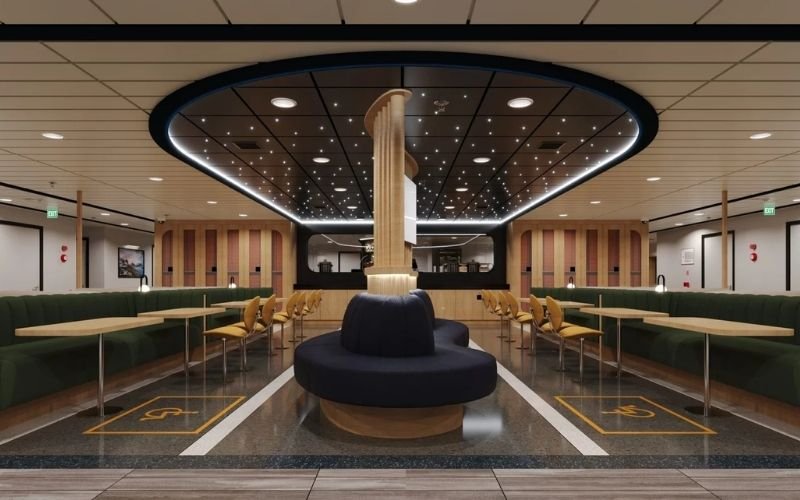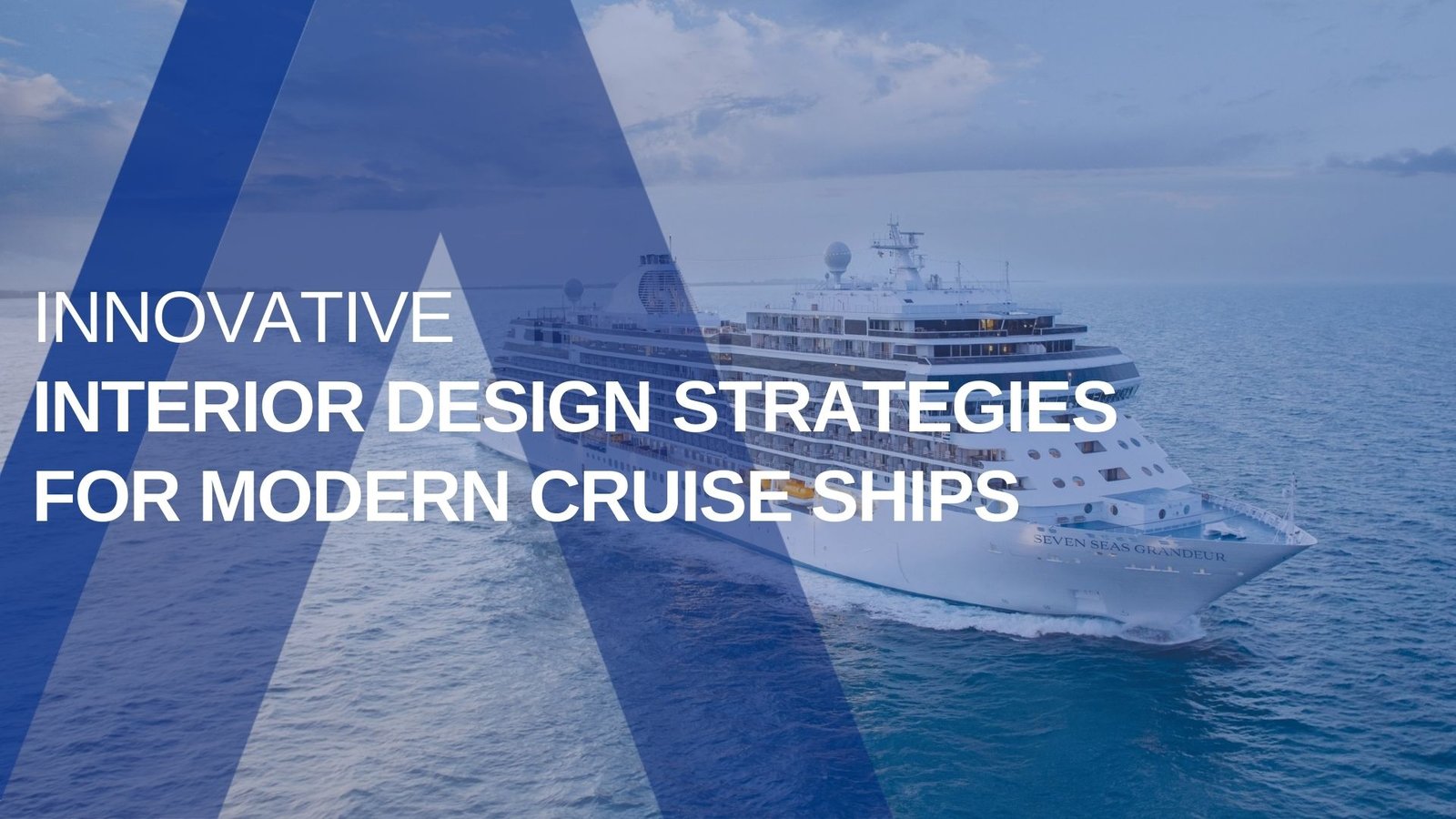As cruise ships become more than just vessels for transportation and evolve into floating luxury resorts, the demand for innovative interior design is growing rapidly. Today’s cruise passengers expect more than comfort—they seek immersive environments, smart functionality, and a sense of personalized experience. This has led to a significant transformation in how interior designers approach ship spaces.
In this article, we explore cutting-edge strategies that are shaping the future of cruise ship interiors, blending aesthetic excellence with smart design thinking.

Modular & Flexible Space Planning
Modern cruise ships cater to diverse passenger needs—families, couples, solo travelers, and luxury seekers all require different environments. To address this, designers are adopting modular layouts that allow multifunctional spaces.
Cabins that convert into workspaces
Dining areas that transform into entertainment lounges
Foldable walls and movable furniture
Such designs maximize spatial efficiency and enhance user comfort, especially on long journeys. This flexible thinking is especially vital in the design of Suites & Staterooms, where space optimization must meet the expectations of luxury.
Integration of Smart Technologies
Technology has become an integral part of interior design. Cruise ships now include:
Smart lighting systems that adjust based on time of day and occupancy
Digital touch panels for in-room controls
IoT-enabled furniture and climate management systems
These innovations enhance energy efficiency and provide passengers with customizable comfort, setting a new standard for luxury at sea. Within Entertainment and Public Spaces, smart lighting and acoustics can transform a space from daytime lounge to nighttime event venue.
Sustainable Material Choices
Sustainability is not just a trend—it’s a design principle. Cruise interiors are now being crafted with:
Recycled or renewable materials like bamboo, cork, and reclaimed wood
Low-VOC finishes and eco-friendly coatings
Textiles made from ocean waste or organic fibers
Designers are also focusing on longevity and maintenance ease, ensuring that interiors remain both beautiful and eco-conscious over time. This approach plays a core role in Concept Design for Cruise Ship Interiors, where sustainability is embedded from the earliest stages of planning.

Biophilic & Wellness-Oriented Design
Health and well-being are central to modern design. Cruise interiors now include:
Natural elements like green walls, wooden textures, and soft lighting
Wellness zones with spa-inspired amenities
Fitness-friendly spaces integrated into cabins and suites
These strategies improve passenger mood, relaxation, and overall experience, making the ship feel more like a private retreat. Spa & Beach Clubs and Fitness Centres are being reimagined not only for luxury, but for mental and physical regeneration at sea.
The Future is Sensory, Smart, and Sustainable
The future of cruise ship interiors lies in the intersection of design, technology, and emotion. Today’s designers must go beyond aesthetics—they must anticipate human needs, respect the environment, and deliver spaces that enhance the passenger journey from start to finish.
As floating cities, cruise ships demand interiors that are not only beautiful but also resilient, intelligent, and deeply human. The result? Unforgettable experiences at sea, powered by design.




